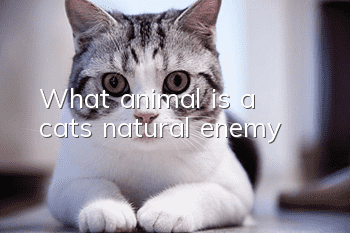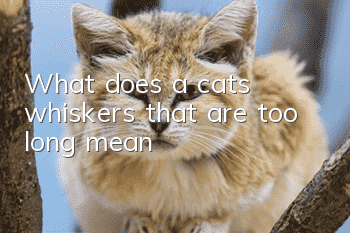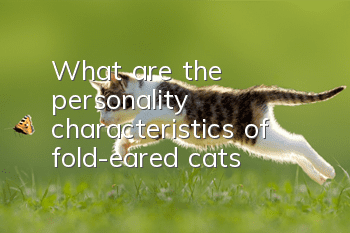What animal is a cat’s natural enemy?

We are all familiar with cats. Feeding is done in almost every household. In cities they are considered pets and not used to catch rats. Although cats accompany us everywhere, we must understand cats. In fact, Meows have many mysterious and strange characteristics. For example, cats have nine lives. The cat fell from a height of tens of meters without any damage. This cat has night vision. This cat is good at catching snakes. Even if it doesn't eat snakes, it will kill a snake on sight. In fact, one of the most mysterious, terrifying and puzzling things about cats is that when a cat encounters its natural enemy, the wild raccoon, it will obediently follow the wild raccoon to the pond. Then continue drinking water. When it is full, it will vomit, vomit, and then drink again, and again, until it cleans its stomach and intestines, and the cat will lie down obediently. The wild beaver opens the cat's belly with its claws and enjoys the meal.
It is said that wild beavers don’t like dirty cats, so they take cats to drink water and clean their stomachs. The cat was then eaten by a wild beaver. There was no resistance throughout the process. It's really scary. During the drinking process, if the cat does not want to drink again, the wild beaver will pat the cat on the back, and the cat will continue to drink water and continue to vomit until it cleans its stomach.
So why are cats so afraid of wild beavers? Wild beavers are also known as bobcats and jungle cats. According to the former old man, wild beavers were transformed from domestic cats. It is an animal of the genus Felis that results from domestic cats gradually adapting to a living environment in the wild after becoming homeless. Wild beavers are very similar to domestic cats. The difference is that they have long legs, short tails and large ears. Their weight is not much different than that of domestic cats, but they are very wild and ferocious, far more than domestic cats. They compete with house cats and house cats. We all know that folk songs are fierce. They dare to hunt animals many times larger than themselves, such as sika deer, wild goats, antelopes, etc. They are brave, fierce and intelligent. When they hunt large animals, they will jump up and bite their own necks until the animal they bite is exhausted. Although wild beavers are not as ferocious as neck bites, they are more ferocious than foxes and wolves. Sometimes they even dare to compete with wolves. Although wolves are ferocious, it is difficult for a lone wolf to compete with a wild beaver. You know, the weight of the beast is much smaller than that of wolves, its teeth are not long, and its IQ is not higher than that of wolves, but it just dares to hunt wolves and is not timid at all. Cats are not nearly on the same level as wolves and cannot be compared to them. Therefore, the cat has no advantage in resisting the wild raccoon and can only be eaten by the wild raccoon.
In other words, wild raccoons are also close relatives of domestic cats. It is also a cat. Why can't it get along with domestic cats? What's even more frightening is that when the wild raccoon eats the cat, it feels dirty. They had to take him to have his stomach pumped. After all preparations have stopped, the wild raccoon can enjoy its deliciousness in peace. From this perspective, wild raccoons are the bane and natural enemy of domestic cats. Although raccoons are called bobcats and jungle cats, they do not live in the jungleOr the mountains. Their home areas are usually found on the edges of ponds and reeds. Wild raccoons come out at night and hide and rest during the day. When a domestic cat sees a wild raccoon, it is like a mouse seeing a cat. No matter how much Ye Lizi tried, the cat wouldn't budge. The wild beaver took the cat to the pond first, and then continued to drink water. When a cat doesn't want to drink, the wild beaver will pat the cat's back with its paws to make it continue drinking, and then vomit repeatedly to clear its stomach. Finally, the house cat lay down obediently. The raccoons use their claws to cut open the cat's belly and eat first the internal organs, then the limbs until they are clean.
So, why does this strange phenomenon occur? So far, science has not given a reasonable explanation, and it can only be explained by one thing. Although the cat is also an animal that eats meat and vegetables, it is also an animal that catches mice and fish. There is nothing a cat can do for older animals. In fact, after thousands of years of human domestication, this cat has evolved into a docile little domestic animal and lost its wild nature. Today's cats don't even bother to catch mice, so they rely on humans to feed them and live a carefree life. Therefore, when it encounters a wild raccoon dog, it does not have the ability or courage to fight back.
A long time ago, there were many wild beavers in the countryside. When food was scarce, they also stole chickens, ducks, geese and lambs. The family dog is no match for a wild beaver. Although it is not big, it is very fierce. Well-trained hunting dogs also pose little threat to wild beavers. As for why domestic cats dare not resist in front of wild beavers, this can only be said to be a conditioned reflex among animals caused by the law of the jungle! Wild beavers are the mortal enemies of domestic cats. When cats see wild beavers, their legs are soft and they neither run nor resist. Let the wild beavers throw as many as they can before they finish eating. According to literature, there are reports of wild pythons hunting giant pythons. It's incredible when you think about it. It’s unbelievable to kill an animal much larger than it is, let alone a small domestic cat! When a domestic cat encounters a feral cat, all it can say is that its fate is terrible and should Unfortunately.
- Can catnip be used on cats that are two months old?
- Cat’s soft stool is bloody but very lively
- Why is the kitten drooling?
- What should I do if my cat is too thin?
- How to get a kitten to urinate in the cat litter on its own?
- Do cats lose teeth?
- How to train a cat correctly? Make the cat become well-behaved and clingy!
- How many pounds of cat food do cats eat in a month?
- Can pet cats eat ham?
- When is the best time to neuter a male cat?



